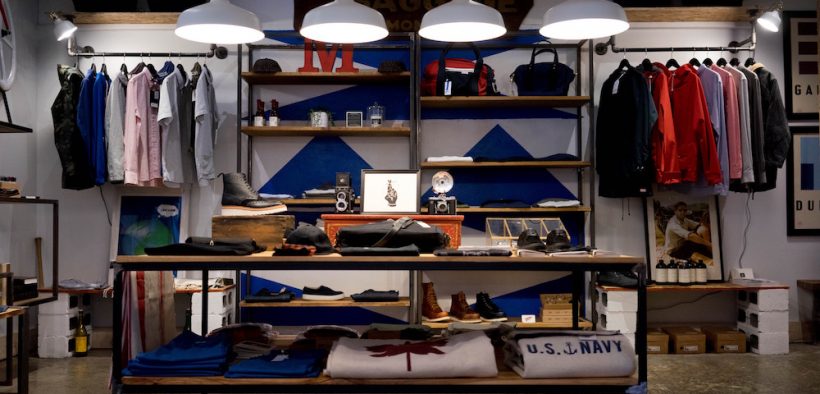David Jones, Disney and In-store experience
Share

You may have seen in most recent news that David Jones is collaborating with Disney to create five Disney themed neighbourhoods in their Elizabeth Street store. As a Disney fan, I’m certainly very excited about the Disney Princess area and the Lego Mickey Mouse (almost 50 000 bricks!!). As a retail advocate, I’m excited about the investment into in-store experience. David Jones, as a retail leader, is highlighting the importance of creating in-store experiences that are meaningful and unique.
Of course, this is nothing new and is representative of a growing trend in the retail sector to compliment online shopping with a more personal in-store experience. This may be a reaction to e-commerce retailers such as Amazon, but in reality, a lot of shopping is still done in-store. According to Smart Company, online sales sits at just 5.4%, which means almost 95% of the country is still going in-store.
Why does in-store experience matter so much?
It’s cheaper and easier to just have an online store – if you went online only, you’d save money on rent, staff and merchandising. But at what cost? I’m sure you’re all familiar with that impulse purchase – the shoes you don’t really need but looked so good in the window… Therein lies the beauty of a bricks-and-mortar store. It’s a lot harder to walk away from the perfect pants once you’ve tried them on and they’re right in front of you than to click and close the browser.
In-store experience creates engagement with your brand and allows customers to build an allegiance in your brand. Pop-up stores are becoming popular with online retailers to engage with customers, or for iconic labels to develop their brand in places they don’t have a presence in. BlackMilk, Brisbane-based fashion label with a cult following, opened a pop-up store in Sydney to bring their clothes to customers and allow them to see, first-hand, the quality of their clothes.
So, the in-store experience means more impulse purchases, greater brand loyalty and a more engaging experience with the buying process.
What can you do now?
#ONE
It seems simple, but the first thing you need to invest in to make sure the in-store experience is a good one, is your people. Having sales people who are warm, friendly and helpful without being too ‘tiger mum’ are invaluable to create a special in-store experience. It’s like your favourite barista that you’ll keep going back to even if the coffee is a bit cold, because he has great banter – investing in the experience will invite customers to keep coming back to the store, even if they can get the product online. Great customer experience is shared and will organically grow store visits as word gets out about how great your staff are.
#TWO
Think outside the box. In-store experience means more than putting on free cupcakes for VIP members once a month. Lululemon is a great example of a store that delivers a bit extra – who would’ve thought that an activewear store would also do yoga classes? A retail store in Korea has put in a catwalk for its customers to try out clothes and post on social media.
#THREE
Personalisation. I walked past a store the that enabled me to make my own jandals. Not literally – it was a case of being able to add the diamantes and extra bits that I wanted. I didn’t need jandals, but these were unique. ‘Design your own’ is nothing new and popular across the globe. You can design your own Converse in the US, design your own KitKat in Japan and in Myer, your own Toblerone. Typo are offering monogramming for free until Christmas and even that has me excited about the opportunity to customise my stationary (for impartiality, Kikki K also do these). Every customer wants to feel special and giving them the opportunity to make something for themselves gives them an arts and crafts experience much more satisfying than designing a logo on paint and ordering it on shoes. Personalisation appeals to the customer’s need to feel valued and special and an easy way to entice them in-store.
#FOUR
Fill a need. Customers are much more likely to come in-store when you’re offering a solution beyond just what their products can deliver. Lowe’s (the US Bunning’s) recognised the opportunity to create a unique in-store experience that filled the needs of their customers who were undertaking DIY projects. They utilised VR technology to enable customers to learn skills like paving, concreting or painting in a safe and controlled environment. This boosts in-store traffic with this unique and pretty cool experience which customers aren’t able to do online. You don’t have to go all out with VR, but think of what your customers need from you – maybe it’s cooking classes, make-up lessons or demonstrations on how to BBQ the best snag?
#FIVE
Atmosphere. It’s not enough to have engaging staff, interesting products and activities on hand; think about what the atmosphere in your store is saying to your customers. Think about the subtleties that your customers aren’t even thinking about – like smells, lighting, décor, design. Because subconsciously, they’ll notice! It’ll have an impact on how long they spend in your store.
Have you thought about applying design techniques to your layout? What about if you have too much stock on the shelves and are overwhelming your customers with choice and colour, or is your music just a little too loud? Remember, sometimes our customers can become overstimulated, not just understimulated!
Omnichannel experience is the New Retail and means customers are no longer happy with just an online or in-store only experience. Getting the right balance is tricky, but we’re here to help. We’ve brought in some of the leading experts in in-store, online and omnichannel retail to impart their wisdom at New Retail ’19. I’m about as excited for this (the largest retail gathering in Australia) as I am for the David Jones Disney display. See you there!




















Follow us on social media